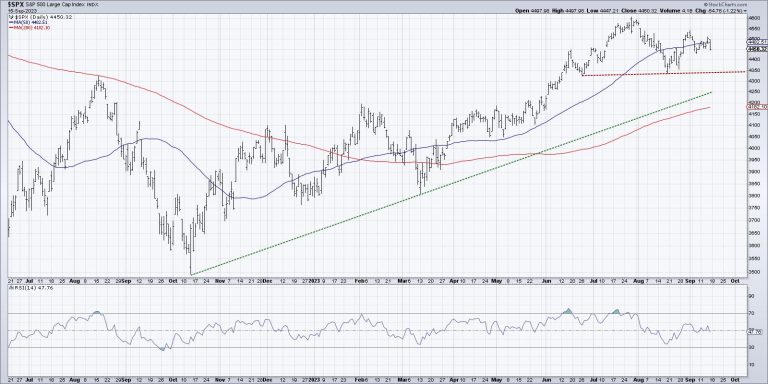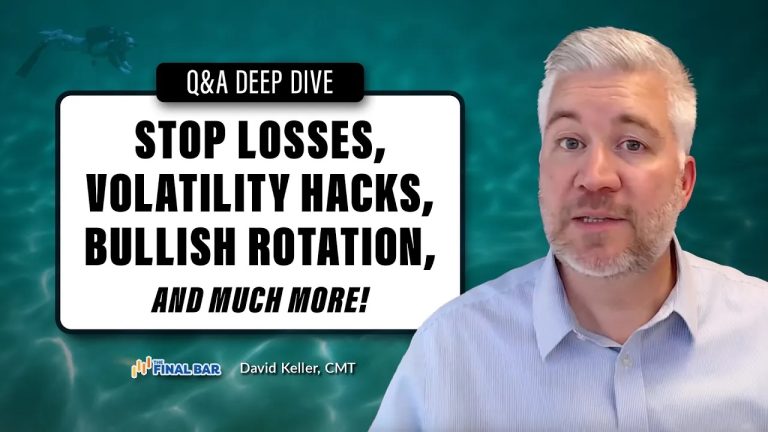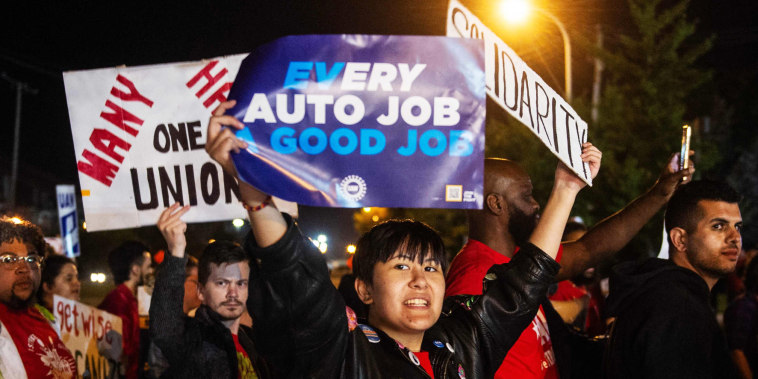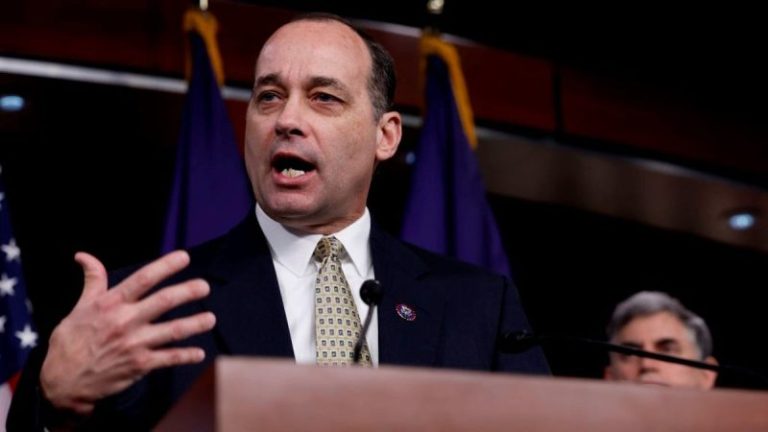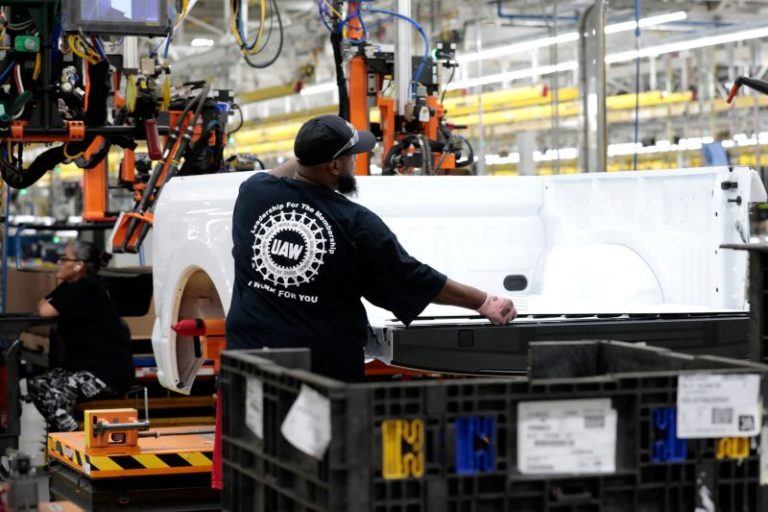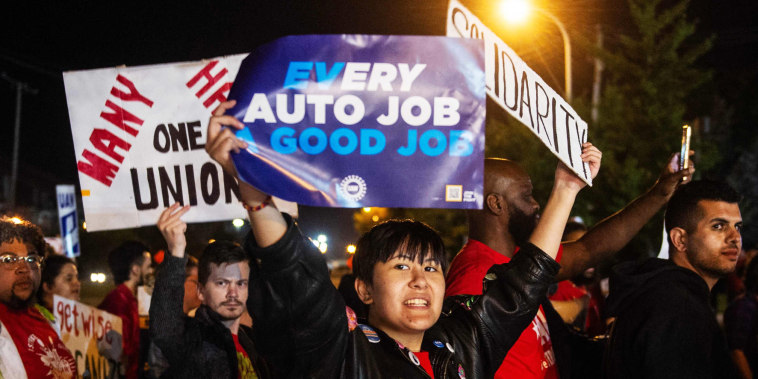The United Auto Workers’ standoff with the “Big Three” U.S. automakers — General Motors, Ford and Chrysler maker Stellantis — isn’t all about money, but much of it is.
With up to 146,000 workers threatening to strike as soon as Friday if contract agreements can’t be reached, late-stage negotiations have revolved heavily around compensation and benefits.
The union has sought a wage increase of up to 40% (amounting to 46% compounded) over the length of the next four-year contracts, along with full pay for 32-hour workweeks, better retirement pensions and improved health care.
“I know that our demands are ambitious, but I’ve told the companies repeatedly I’m not the reason that members’ expectations are so high,” UAW President Shawn Fain said last week. “What’s driving members’ expectations are the Big Three’s profits.”
Annual gross profits have risen by 34% at Ford and 50% at GM since 2019, the last time the UAW and the Big Three entered contract negotiations. Stellantis, which formed when Fiat Chrysler merged with Peugeot in 2021, grew its annual gross profit by 19% from 2021 to 2022.
The Big Three have already agreed to raise workers’ wages but say they need to save enough money to invest in the globally competitive shift toward electric vehicles.
Another key reason the UAW is pushing hard for steep wage increases is to make up for historically high inflation since it secured its current contracts in October and December 2019.
Since then, hourly U.S. wages among motor vehicle and parts manufacturers (including union and nonunion workers) grew by 14.8%, to an average of $27.99 as of August. Across all industries, average hourly earnings grew by 19% over that period, to $33.82.
High inflation has eroded a lot of those gains, with the Consumer Price Index showing costs rising by 17.7% over that time. Under previous UAW contracts dating back decades, many Detroit autoworkers had received cost-of-living raises to keep pace with inflation, but those provisions were jettisoned after the 2008 financial crisis upended the car industry.
Pay among Big Three workers can vary by tier — a practice the UAW has called to eliminate. (UPS workers secured a contract last month that curtailed a similar structure.) For now, the tiers include part-time employees making the lowest hourly wages, “in-progression” full-time employees with earnings around the middle of the pay scale and full-time employees making up to the maximum wage.
Maximum average hourly wages are $31.77 at Stellantis, $32 at Ford and $32.32 at GM.
This money should be spread around. Not evenly per se, but show us the same gratitude you’re showing the CEO.
Ford Truck plant worker Troy dale, Louisville, ky.
Workers say they haven’t been rewarded as handsomely as the executives running their companies during a period of high profits.
The CEOs of the Big Three have each had salary increases of 30% to 40% in recent years. GM chief Mary Barra’s compensation grew by 32.5% from 2018 to 2022. During the same period, the median GM employee’s pay grew by just 2.8%, public filings show.
Ford appointed a new CEO, Jim Farley, in 2020, and pay for that role jumped by 18% from 2018 to 2022, while the median Ford employee’s pay rose by 16.1%.
Data for Stellantis is unavailable because the company was formed only in 2021 and is now headquartered in Amsterdam, where pay disclosure rules differ from those in the U.S. But disclosures show the company’s CEO, Carlos Tavares, making 365 times as much as its median employee.
That ratio is 362-to-1 at GM and 281-to-1 at Ford, putting all three automakers above the average S&P 500 company’s ratio of 272-to-1, according to the AFL-CIO, a major coalition of unions.
“I feel like this money should be spread around,” said Troy Dale, a UAW Local 862 member at Ford’s truck plant in Louisville, Kentucky. “Not evenly per se, but show us the same gratitude you’re showing the CEO.”
Dale said that after more than seven years of service, he makes $29.63 an hour, still short of the company’s top rate.
Most workers at the plant live paycheck to paycheck, he said. His own family’s finances are deeply tied to the facility, where his son also works and where his daughter started just this week.
“This 40% would help a whole lot of people,” Dale said.
The automakers’ counteroffers have fallen well short of the UAW’s 40% target. Stellantis proposed late last week to boost wages by 14.5%, which Fain rejected the same day as “deeply inadequate.” The highest percentage increase publicly on offer is Ford’s, at 20%, which the UAW said “barely makes up for minimal past raises combined with high inflation.”
The companies say they need to balance their labor costs with investments in EV infrastructure, especially given growing competition from the likes of Tesla, Volkswagen and Hyundai, which all employ typically much cheaper nonunion workers in the U.S.
“As we look ahead to that electrified future, we need to maintain our profitability while remaining competitive,” Stellantis said in a statement. “At 40% greater cost than conventional technology, passing the additional cost of electrification on to consumers is not an option as it puts EV affordability at risk for middle-class buyers.”
A lengthy strike could reduce production and delay plans at GM, Ford and Stellantis during a “crucial period” in that industrywide shift, Wedbush Securities EV analyst Dan Ives wrote in a note Monday.
During a strike, the UAW would support its picket lines by paying its members $500 a week. A Goldman Sachs Equity Research estimate this month anticipates the union’s $850 million strike fund lasting up to roughly 11 weeks.
At the same time, the automakers would take on a few billion dollars in revenue losses each week their plants are shut down. Goldman researchers expect GM and Ford to lose about $2.5 billion and $3 billion, respectively, for every week of a strike.
Over the last couple of contracts, we haven’t really hit what we’ve been asking for, and we feel like this is the time.
Ford assembly plant Worker Jonathan Ellis, Louisville, Ky.
The firm also modeled the cost of the UAW’s proposed 40% wage increase, projecting $4 billion to $6 billion in added costs over four years for GM and Ford each. (It didn’t provide estimates for Stellantis.) For comparison, the automakers made a combined $25.9 billion in net income last year alone.
In Louisville, workers have already participated in practice pickets and signed up for strike shifts that would begin at midnight Friday. Dale and his kids are signed up, as is Jonathan Ellis, who also works for Ford’s Louisville operations at a nearby assembly plant.
“The strike part, it’s scary,” said Ellis, who worked his way up to earning $31.78 an hour after eight years at the company. “You don’t know how long it’s going to go for.”
But if there’s no agreement, he’ll be ready to walk out with his colleagues.
“Over the last couple of contracts, we haven’t really hit what we’ve been asking for,” Ellis said, “and we feel like this is the time.”
This post appeared first on NBC NEWS


